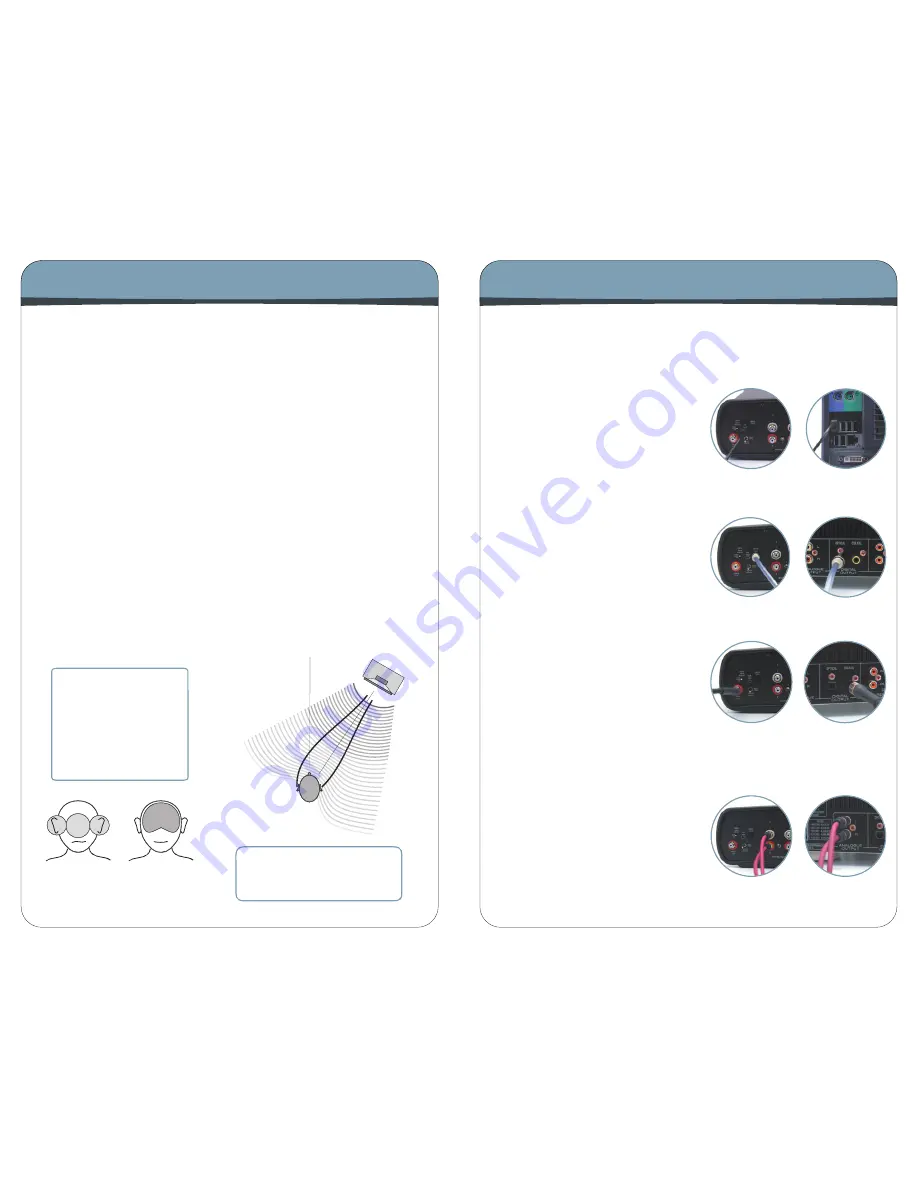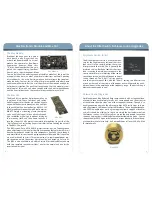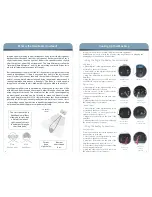
8
9
Hooking Up Your Max Amp
USB Input
Optical Input
Coaxial Input
Analog Input
...Using the Digital-to-Analog Converter Option
...Using the Analog Connections
1. Select ‘digital’ on the digital/analog selec-
tor switch on the back of the unit
2. Select ‘USB’ on the digital selector switch
on the back of the unit
3. plug your USB cable into the back of the
amplifi er
4. plug the other end of your USB cable into
any USB jack on your computer or player.
It is a good idea to turn your units off while connecting equipment.
ALWAYS turn your units off with the volume all the way down before plugging and
unplugging your headphones from the jacks.
Amplifi er DAC,
USB
Computer, USB
RCA analog
inputs
amplifi er DAC,
coaxial input
CD player,
coaxial output
Amplifi er DAC,
optical input
CD player,.
optical output
CD player,
analog
outputs
You will need an RCA cable with right and left
terminations on both ends.
1. Select ‘analog’ on the digital/analog selec-
tor switch on the back of the unit
3. plug your RCA cables into the back of the
amplifi er using analog input set ‘1’ or ‘2’.
4. Select the corresponding set number of the
analog input select switch
5. plug the other end of your RCA cable into
the analog output of your CD player.
1. Select ‘digital’ on the digital/analog selec-
tor switch on the back of the unit
2. Select ‘optical’ on the digital selector
switch on the back of the unit
3. plug your optical cable into the back of the
amplifi er.
4. plug the other end of your optical cable into
the optical output of your player.
1. Select ‘digital’ on the digital/analog selec-
tor switch on the back of the unit
2. Select ‘coaxial’ on the digital selector
switch on the back of the unit
3. plug your coaxial able into the back of the
amplifi er.
4. plug the other end of your coaxial cable into
the coaxial output of your player.
What is the HeadRoom Crossfeed?
Imagine you are listening to a pair of speakers. If you turn off the left speaker,
both ears hear the sound from the right speaker. But because the left ear is
slight farther away than the right ear, it hears the speaker’s sound slightly
after the right ear; about 300 microseconds. This time difference is called the
“inter-aural time difference” and it is the main thing your brain listens for in
order to tell where to place sound left-to-right.
But in headphones if you turn off the left channel, only the right ear hears the
sound. In headphones, if there is any sound that is only in the left channel,
or only in the right channel, then only that ear hears the sound. This is not
natural, and you brain becomes fatigued trying to fi gure out where sound is
coming from when only one ear is hearing it. This tends to create an audio
image that is a blob on the left, blob on the right and a blob in the middle.
HeadRoom amplifi ers cure the problem by allowing you to cross-feed a little
of the left and right channels across to each other through a short time delay
using the processor switch. The usefulness of the circuit varies depending
on what type of recording you are listening to; mono and binaural record-
ings need no processor at all. Old studio recordings that have instruments
panned hard left or right, benefi t greatly from the processor. Live and classi-
cal recordings miked from a distance benefi t somewhat less, and can often
be listened to without the processor quite comfortably.
Plain
Headphones
With
HeadRoom
The crossfeed switch in
HeadRoom amplifi ers
allow you to cross-feed
a little of the left and
right channels across
to eachother through a
short time delay.
Far ear
hears
slight delay.
Near ear
hears sound
fi rst.
30 degrees
off axis

























